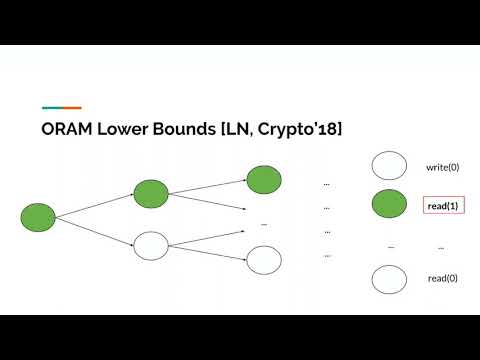CryptoDB
Lower Bounds for Differentially Private RAMs
| Authors: | |
|---|---|
| Download: |
|
| Abstract: | In this work, we study privacy-preserving storage primitives that are suitable for use in data analysis on outsourced databases within the differential privacy framework. The goal in differentially private data analysis is to disclose global properties of a group without compromising any individual’s privacy. Typically, differentially private adversaries only ever learn global properties. For the case of outsourced databases, the adversary also views the patterns of access to data. Oblivious RAM (ORAM) can be used to hide access patterns but ORAM might be excessive as in some settings it could be sufficient to be compatible with differential privacy and only protect the privacy of individual accesses.We consider $$(\epsilon ,\delta )$$(ϵ,δ)-Differentially Private RAM, a weakening of ORAM that only protects individual operations and seems better suited for use in data analysis on outsourced databases. As differentially private RAM has weaker security than ORAM, there is hope that we can bypass the $$\varOmega (\log (nb/c))$$Ω(log(nb/c)) bandwidth lower bounds for ORAM by Larsen and Nielsen [CRYPTO ’18] for storing an array of nb-bit entries and a client with c bits of memory. We answer in the negative and present an $$\varOmega (\log (nb/c))$$Ω(log(nb/c)) bandwidth lower bound for privacy budgets of $$\epsilon = O(1)$$ϵ=O(1) and $$\delta \le 1/3$$δ≤1/3.The information transfer technique used for ORAM lower bounds does not seem adaptable for use with the weaker security guarantees of differential privacy. Instead, we prove our lower bounds by adapting the chronogram technique to our setting. To our knowledge, this is the first work that uses the chronogram technique for lower bounds on privacy-preserving storage primitives. |
Video from EUROCRYPT 2019
BibTeX
@article{eurocrypt-2019-29342,
title={Lower Bounds for Differentially Private RAMs},
booktitle={Advances in Cryptology – EUROCRYPT 2019},
series={Advances in Cryptology – EUROCRYPT 2019},
publisher={Springer},
volume={11476},
pages={404-434},
doi={10.1007/978-3-030-17653-2_14},
author={Giuseppe Persiano and Kevin Yeo},
year=2019
}

